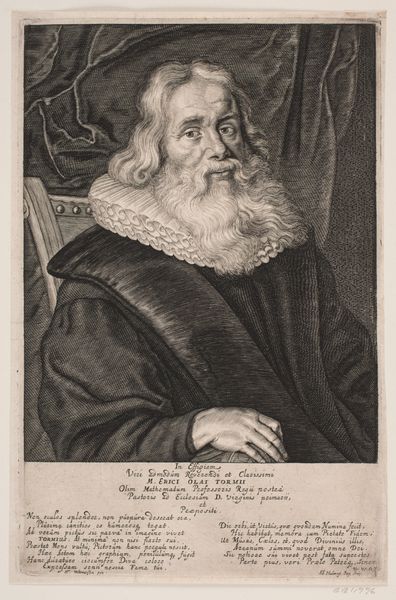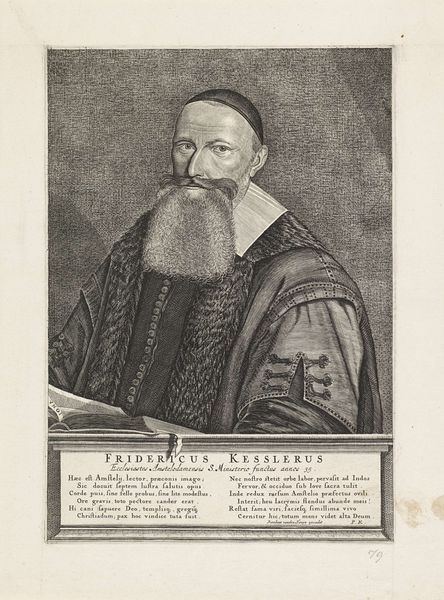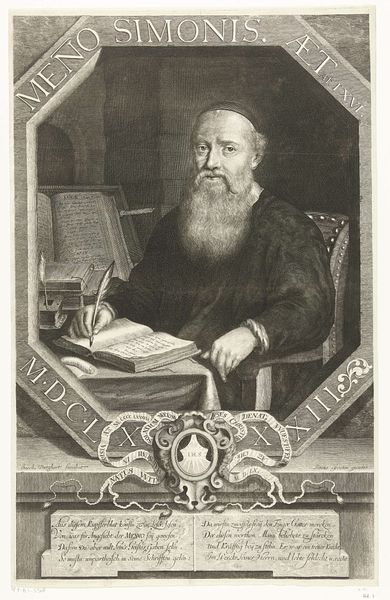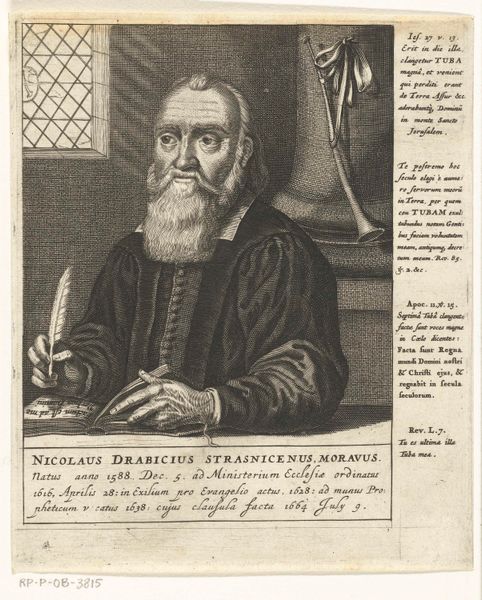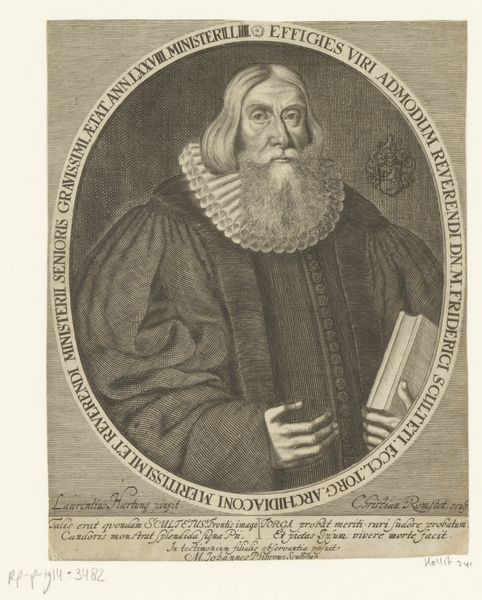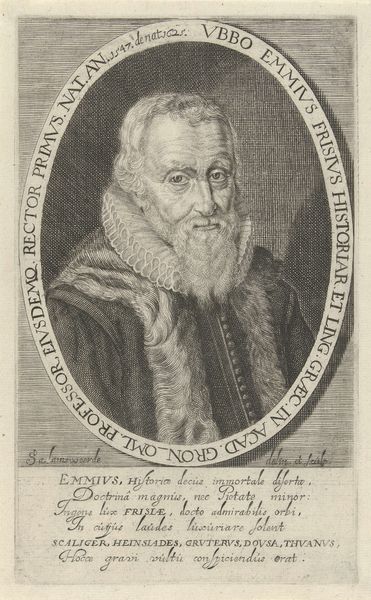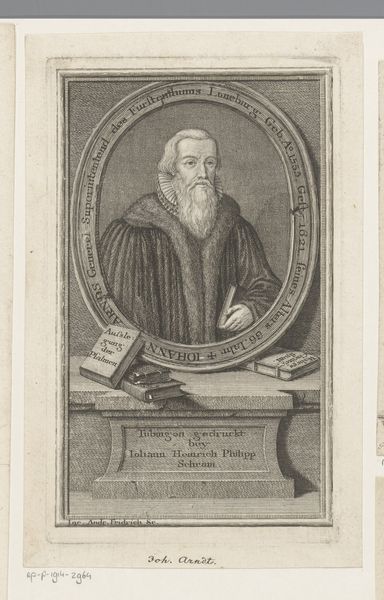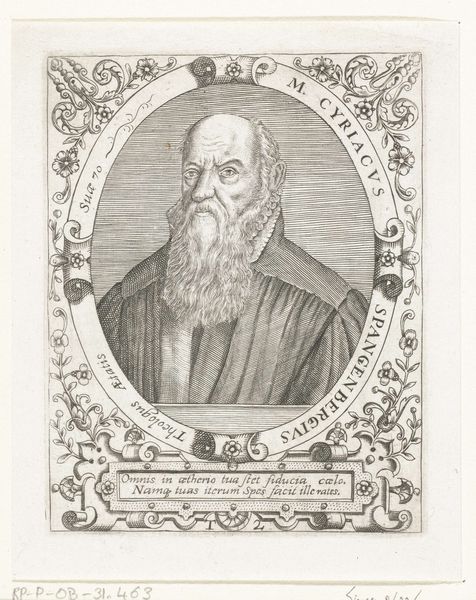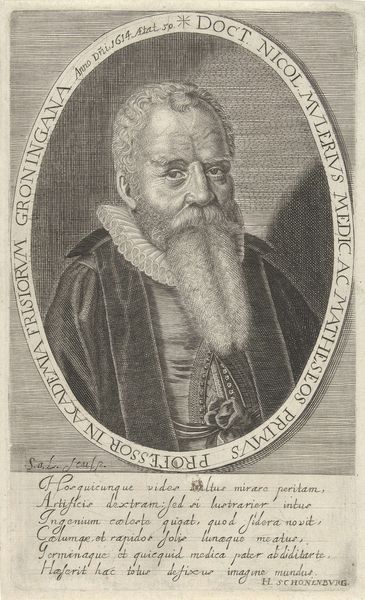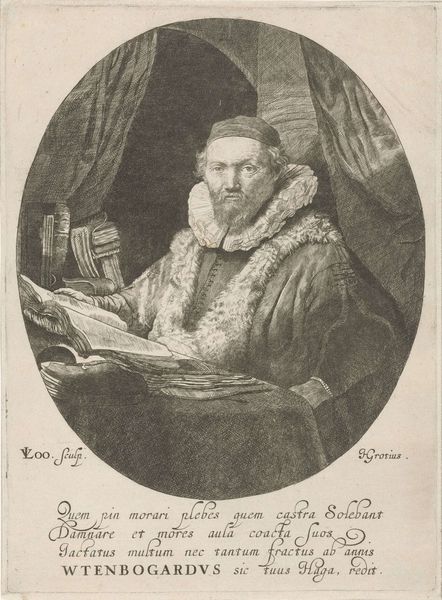
print, engraving
#
portrait
#
baroque
# print
#
old engraving style
#
history-painting
#
engraving
Dimensions: 326 mm (height) x 190 mm (width) (plademaal)
Curator: This piece is a portrait engraving dating back to the 1650s. It’s titled “Peder Pedersen Winstrup,” attributed to Albert Haelwegh. You can find it on display here at the SMK, Statens Museum for Kunst. Editor: It’s strikingly formal. There's something about the density of the lines and the solemn gaze that projects a tangible sense of authority and control. The way the face is modeled makes me want to know more about the artist's process. Curator: Albert Haelwegh captured Winstrup, who was a very powerful bishop at the time, during a period of significant political and religious upheaval. We see not just an individual, but an intersection of religious authority and shifting Scandinavian power dynamics. Consider Winstrup's role, for instance, as a symbol of the church's power structure at a moment of immense socio-political pressure. Editor: Absolutely. Look at the precision of the engraving. The detail in the bishop's vestments, the texture of his beard, even the meticulously rendered books in the background. The engraver must have worked for days, if not weeks, on the copper plate. The labor embedded in these objects is just immense. And engravings allowed these images to circulate widely, which really solidified the power of their subjects. Curator: I find it particularly interesting how the text accompanying the image constructs a narrative of scholarly and religious prestige, carefully crafting an image for posterity. This isn’t merely a portrait; it’s a carefully constructed performance of power and knowledge within its historical context. Editor: That's it, isn't it? These objects are always part of broader material culture and economics. How did printmaking shift traditional craft? How did it help to centralize the image and spread its reach? Looking closer, you start to see it—almost as a means of early "mass production." Curator: Right, which gives it new implications beyond simply commemorating an individual. Editor: Definitely a point of deeper engagement for me than when I just took that first glance! Curator: For me too! I appreciate considering this artwork as not just an isolated piece, but as a vital part of larger historical currents and representational strategies of power.
Comments
No comments
Be the first to comment and join the conversation on the ultimate creative platform.
